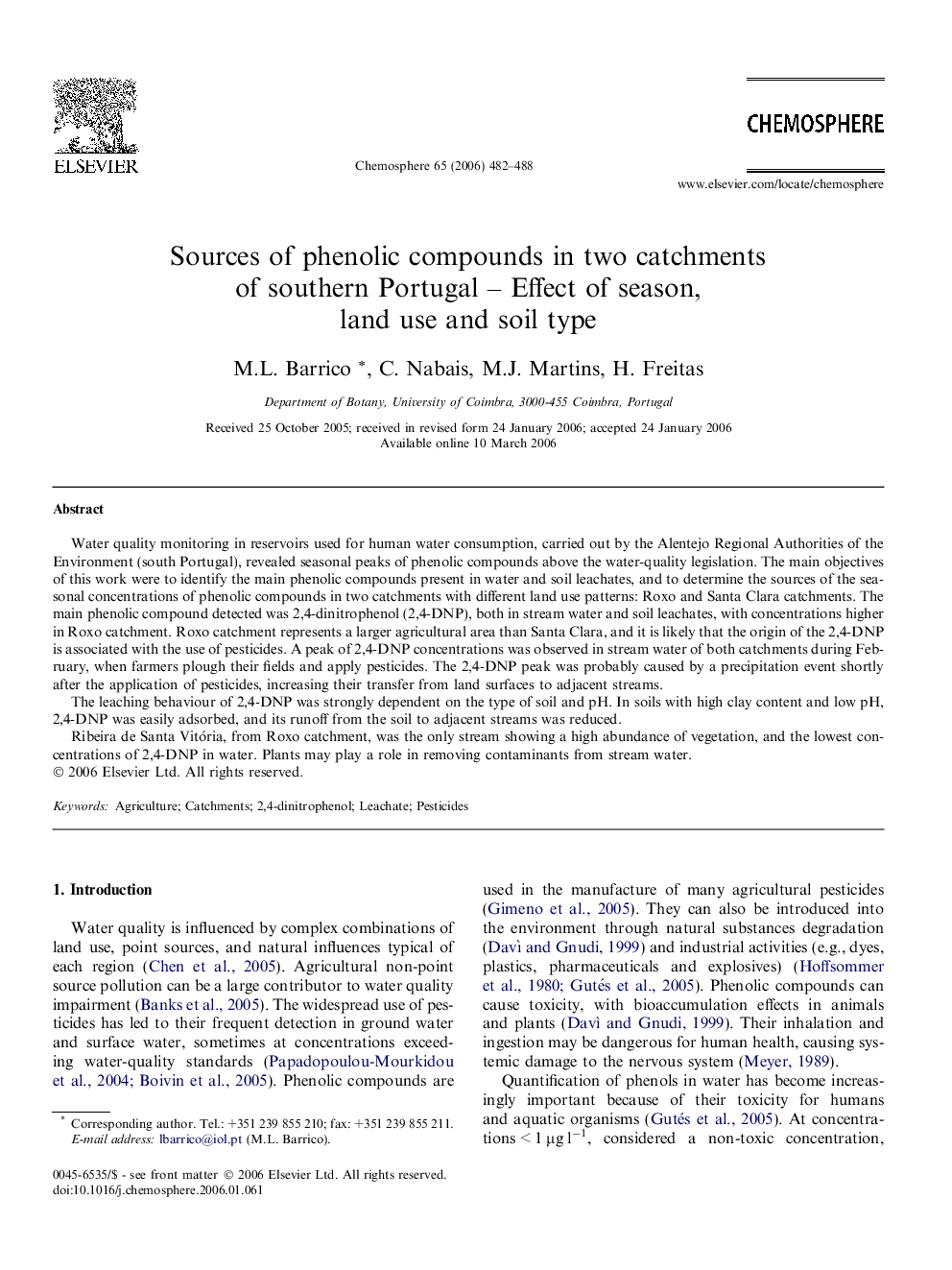| Article ID | Journal | Published Year | Pages | File Type |
|---|---|---|---|---|
| 4416232 | Chemosphere | 2006 | 7 Pages |
Water quality monitoring in reservoirs used for human water consumption, carried out by the Alentejo Regional Authorities of the Environment (south Portugal), revealed seasonal peaks of phenolic compounds above the water-quality legislation. The main objectives of this work were to identify the main phenolic compounds present in water and soil leachates, and to determine the sources of the seasonal concentrations of phenolic compounds in two catchments with different land use patterns: Roxo and Santa Clara catchments. The main phenolic compound detected was 2,4-dinitrophenol (2,4-DNP), both in stream water and soil leachates, with concentrations higher in Roxo catchment. Roxo catchment represents a larger agricultural area than Santa Clara, and it is likely that the origin of the 2,4-DNP is associated with the use of pesticides. A peak of 2,4-DNP concentrations was observed in stream water of both catchments during February, when farmers plough their fields and apply pesticides. The 2,4-DNP peak was probably caused by a precipitation event shortly after the application of pesticides, increasing their transfer from land surfaces to adjacent streams.The leaching behaviour of 2,4-DNP was strongly dependent on the type of soil and pH. In soils with high clay content and low pH, 2,4-DNP was easily adsorbed, and its runoff from the soil to adjacent streams was reduced.Ribeira de Santa Vitória, from Roxo catchment, was the only stream showing a high abundance of vegetation, and the lowest concentrations of 2,4-DNP in water. Plants may play a role in removing contaminants from stream water.
